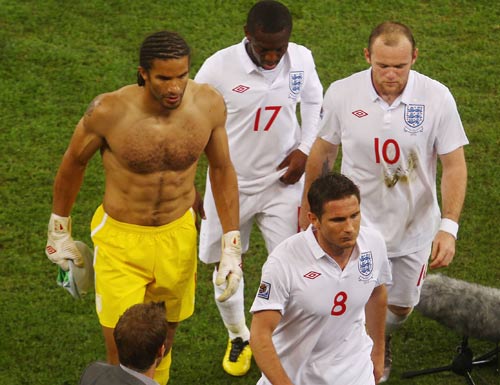
With Kimi Raikkonen and Michael Schumacher on the grid in competitive cars this year, 2012 was all set to be the year of the comeback. Yet it's another F1 returnee who has impressed most, as Romain Grosjean has not only proved he deserves a place in F1 but also shown that he has the potential to be champion.
Grosjean ticked all the boxes in his early career with championship successes in Formula Renault, the F3 Euroseries and the GP2 Asia Series. Then came the 2009 season and a genuine shot at the main GP2 title, which for three of the previous four winners had been a rite of passage to the F1 grid. But Grosjean's F1 chance came a little earlier than scheduled when his manager Flavio Briatore sacked Nelson Piquet Jnr from the Renault F1 team at the Hungarian Grand prix and needed someone to draft in.
Grosjean was first in line but had no prior experience in the car, which itself had suffered from muddled development as Renault laid off a lot of its aero staff before the year and wasted a significant part of its budget working on a KERS unit that would eventually be dropped. The result was the R29, a car that had to be pushed to the very limit to make up for its aerodynamic shortcomings; fine if you're a double world champion like Fernando Alonso, but no good if you're learning your trade on the job. It didn't help that Briatore left the team ruderless three races into Grosjean's F1 career amid the controversy of the crashgate saga.
It soon became clear Grosjean wasn't ready for F1, and after failing to score a point in seven attempts, Renault's new owners replaced him with pay driver Vitaly Petrov in 2010. F1's doors were suddenly slammed in his face and he returned to doing part-time shifts at a Swiss bank ("I had to go in every day at 9am with a suit and a tie to the office," he told Reuters in a recent interview. "I had my own desk and my computer. It was very interesting to see what I call the real world") while taking up a drive in the newly-established FIA GT1 category. Driving a Ford GT he immediately showed his class, taking pole position at the season opener and going on to win the race with Thomas Mutsch. But while his ability to adapt to a completely different car was impressive, it wasn't helping him achieve his goal of returning to the F1 paddock.
For that he needed a switch to single seaters and the French outfit DAMS provided the opportunity in Auto GP and a couple of outings back in GP2. He made the most of his opportunity and by September, 2010 he had been signed up by Gravity Management - the driver management company owned by new Renault boss Gerard Lopez. The following year he was given a full season in GP2 with DAMS and was by far the class of the field, making up for the missed opportunity in 2009 and finally paving his way to a proper F1 drive with a full season of pre-testing. It was a rare second chance in F1 and was made even more unusual by the fact that his team-mate Raikkonen had also just spent two years in the wilderness, putting them on something resembling a level footing. Lotus should be applauded for giving both drivers the opportunity in a driver market where money is so often as big a factor as talent.
Seven races into his first proper F1 season and Grosjeans had some ups (two podiums), but also some downs (three DNFs caused by two collisions and a spin). However, his performance in Canada was a sign of his true potential and a glimmer of what could well be to come.
Lotus, unable to get the super-soft tyres switched on to challenge the likes of McLaren, Red Bull and Ferrari in qualifying at Montreal, opted to target its set-up at race pace. With that in mind Grosjean did a decent job to qualify seventh and then made the very most of his car by running a 49-lap gauntlet on the soft tyres in the race to finish second.
The only other drivers to try a comparable strategy (starting on the super-softs and one-stopping) were Fernando Alonso and Bruno Senna, but in the closing stages Grosjean was two seconds per lap faster than the Ferrari and roughly one second per lap faster than the Williams. What's more he was more or less on the pace of race winner Lewis Hamilton, whose tyres were 29 laps younger.
It's fair to say, therefore, that Grosjean's comeback is close to complete, although you can't help but think what he could have achieved if he had been allowed to continue in GP2 in 2009 before a first full season in 2010 with Renault. The good news is that at 26 years of age he is no older than Hamilton, Nico Rosberg or Paul di Resta and surely he has proved that he deserves a place in F1 as much as any of them. Now he has to prove what he is really capable of.
Laurence Edmondson is deputy editor on ESPNF1
© ESPN Sports Media Ltd.
 Laurence Edmondson is deputy editor of ESPNF1 Laurence Edmondson grew up on a Sunday afternoon diet of Ayrton Senna and Nigel Mansell and first stepped in the paddock as a Bridgestone competition finalist in 2005. He worked for ITV-F1 after graduating from university and has been ESPNF1's deputy editor since 2010
Laurence Edmondson is deputy editor of ESPNF1 Laurence Edmondson grew up on a Sunday afternoon diet of Ayrton Senna and Nigel Mansell and first stepped in the paddock as a Bridgestone competition finalist in 2005. He worked for ITV-F1 after graduating from university and has been ESPNF1's deputy editor since 2010

